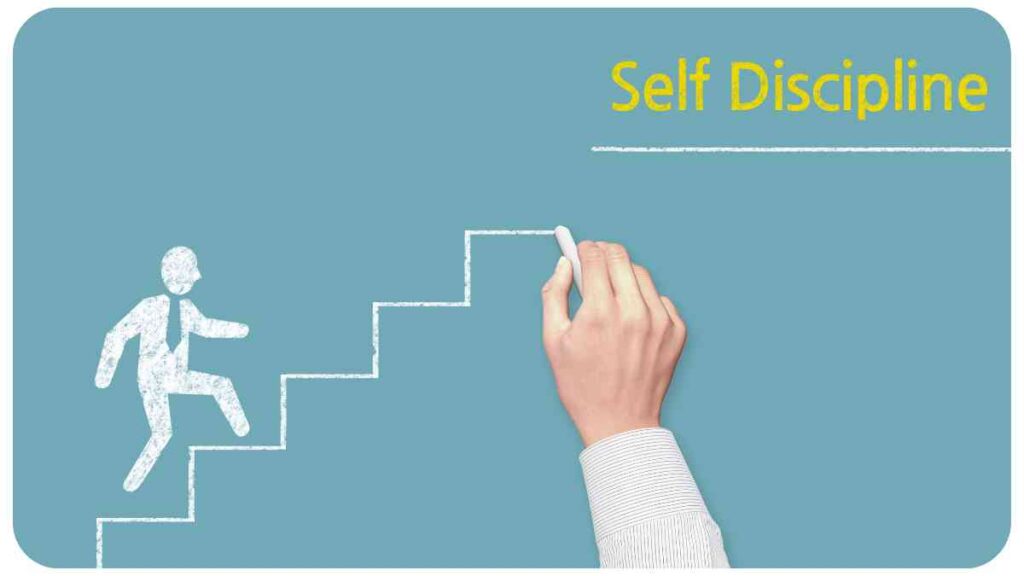In the current era of remote work and telecommuting, self-discipline plays a vital role in achieving success and maintaining productivity. Whether you are a freelancer, a digital nomad, or working from home due to the COVID-19 pandemic, cultivating self-discipline is essential to overcome the unique challenges and maximize the benefits of remote work.
In this article, we will explore the importance of self-discipline in telecommuting, provide strategies for building it, discuss relevant tools and technologies, and share real-life examples to inspire and guide you on your telecommuting journey.
| Key Points |
|---|
| Developing self-discipline as a remote worker is crucial for productivity. |
| Setting clear goals and creating a focused work environment can enhance self-discipline. |
| Effective time management techniques, such as time blocking and using productivity tools, can improve self-discipline. |
| Eliminating distractions and establishing routines can help remote workers stay disciplined. |
| Nurturing physical and mental well-being, seeking accountability, and finding support are essential for self-discipline in telecommuting. |
| Tools and technologies like task management apps and website blockers can aid in maintaining self-discipline. |
| Real-life examples demonstrate how self-discipline is applied in telecommuting. |
| Seeking further reading resources can provide additional insights and strategies for developing self-discipline in remote work. |
| Frequently asked questions address common concerns and provide guidance for developing self-discipline as a remote worker. |
The Rise of Telecommuting
Table: Popular Telecommuting Tools
| Tool | Description |
| Zoom | Video conferencing platform |
| Slack | Communication and collaboration tool |
| Trello | Project management software |
| Google Drive | Cloud storage and document collaboration platform |
| Asana | Task management tool |
With advancements in technology and the increasing demand for work-life balance, telecommuting has become a prevalent practice. Companies are now recognizing the benefits of remote work arrangements, such as reduced commuting time, improved employee satisfaction, and increased access to a global talent pool.
The flexibility and freedom offered by telecommuting have transformed the way we work, allowing individuals to have more control over their schedules and work environments.
“Maintaining work-life balance is crucial for telecommuters. According to The Importance of Mindfulness in Maintaining Work-Life Balance, incorporating mindfulness practices can help telecommuters stay grounded and focused, ultimately leading to greater productivity and overall well-being.
Challenges in Telecommuting

Table: Challenges in Telecommuting
| Challenge | Solution |
| Lack of structure | Establish a routine and set clear work hours |
| Distractions at home | Create a dedicated workspace and minimize interruptions |
| Communication barriers | Utilize collaborative tools and maintain open lines of communication |
| Loss of work-life balance | Set boundaries and separate work and personal activities |
| Difficulty in time management | Adopt time tracking techniques and prioritize tasks |
While telecommuting brings numerous advantages, it also presents unique challenges. One of the most significant obstacles faced by telecommuters is the lack of structure. Without a traditional office environment, it can be challenging to maintain focus, meet deadlines, and stay motivated. Distractions at home, such as household chores or family responsibilities, can further hinder productivity.
Communication barriers may arise due to distance and technological limitations. Additionally, achieving a healthy work-life balance can become more difficult when work and personal life intertwine in the same space. Effective self-discipline can help navigate these challenges and unlock the true potential of telecommuting.
Benefits of Self-Discipline
Cultivating self-discipline brings forth a multitude of benefits for individuals engaged in telecommuting. By developing this crucial skill, you can establish a sense of control, structure, and direction in your work.
Self-discipline enables you to set clear goals, prioritize tasks, and manage your time effectively, leading to increased productivity and optimal performance. Additionally, it enhances your ability to stay focused, resist distractions, and maintain a high level of concentration. By cultivating self-discipline, you can also nurture your physical and mental well-being, as it allows for the establishment of healthy work routines and breaks, reducing stress and burnout.
“Taking care of oneself is essential for remote workers. Creating a Self-Care Routine for Working from Home provides valuable insights on how to prioritize self-care activities, such as setting boundaries, practicing relaxation techniques, and maintaining a healthy work-life balance.
Strategies for Building Self-Discipline
To achieve success in telecommuting, it is vital to develop strong self-discipline. Here are some effective strategies to build and maintain self-discipline while working remotely:
Setting Clear Goals and Priorities
Table: Sample Goal Setting Template
| Goal | Deadline |
| Complete Project X | 30th September |
| Attend Training Seminar | 15th October |
| Achieve Daily Sales Target | Ongoing |
Having clear goals and priorities helps focus your efforts and provides a sense of direction. Define your short-term and long-term goals, both personal and professional, and establish specific deadlines for each.
This practice will enable you to organize your tasks and allocate your time effectively. Utilize tools like task management apps or project management software to track your progress and hold yourself accountable.
Creating a Productive Work Environment
Table: Essential Items for a Productive Work Environment
| Item | Description |
| Ergonomic Chair | Provides comfort and supports good posture |
| Adjustable Standing Desk | Allows for alternating between sitting and standing |
| Noise-Canceling Headphones | Blocks out background noise for better focus |
| Natural Lighting | Enhances mood and increases productivity |
| Plants | Adds freshness and improves air quality |
Designate a specific area in your home as your workspace. This will help separate work from personal life and create a conducive environment for productivity. Invest in essential items such as an ergonomic chair, an adjustable standing desk, and noise-canceling headphones. Optimize your workspace with natural lighting and add some plants to promote a calming and refreshing atmosphere.
Stress reduction plays a vital role in telecommuting success. As highlighted in The Power of Mindfulness in Reducing Stress, incorporating mindful practices, like deep breathing and meditation, can significantly alleviate stress levels and enhance overall well-being for remote workers
Managing Time Effectively
Table: Sample Time Blocking Schedule
| Time | Activity |
| 8:00 AM – 10:00 AM | Deep work: Focusing on a critical project |
| 10:00 AM – 11:00 AM | Team meeting and collaboration |
| 11:00 AM – 12:00 PM | Break and physical exercise |
| 12:00 PM – 1:00 PM | Lunch and relaxation |
| 1:00 PM – 3:00 PM | Task and email management |
Time management is crucial for remote workers. Create a schedule that reflects your natural rhythm and peaks in productivity. Utilize time blocking techniques to allocate specific time slots for different tasks or activities.
Avoid multitasking, as it can lead to decreased focus and productivity. Prioritize your most important tasks during your peak productivity hours.
Building Routines and Rituals

Table: Sample Morning Routine
| Time | Activity |
| 6:30 AM | Wake up and stretch |
| 7:00 AM | Meditate or practice mindfulness |
| 7:30 AM | Exercise or go for a walk |
| 8:00 AM | Prepare and enjoy a healthy breakfast |
| 8:30 AM | Plan the day and set intentions for work |
Establishing routines and rituals can instill discipline and structure into your remote work routine. Create a morning routine to kickstart your day on a positive note. Incorporate activities like exercise, meditation, or journaling to enhance your well-being.
You can also develop an end-of-day routine to signal the completion of work and transition into personal time.
Eliminating Distractions
Table: Distraction-Free Apps and Browser Extensions
| App/Extension | Description |
| Freedom | Blocks websites and apps that distract you during work hours |
| Forest | Helps you focus by growing a virtual tree while avoiding phone usage |
| StayFocusd | Limits the time spent on specific websites that tend to be time-wasting |
| RescueTime | Tracks and analyzes time spent on different websites and apps |
| Inbox When Ready | Restricts access to your email inbox until specified times |
Distractions can significantly hinder productivity. Identify your most common distractions, such as social media or notifications, and take measures to minimize or eliminate them. Utilize distraction-free apps and browser extensions to block access to time-wasting websites or enforce focus mode during dedicated work periods.
Creating a mindful work environment is crucial for telecommuters. How to Creating a Mindful Work Environment at Home outlines practical tips for cultivating a calm and productive workspace, including minimizing distractions, incorporating nature elements, and establishing a consistent routine.
Taking Breaks and Restoring Focus
Table: Recommended Break Activities
| Activity | Description |
| Stretching or Yoga | Relieves physical tension and improves focus |
| Mindfulness or Breathing Exercises | Calms the mind and reduces stress |
| Outdoor Walk or Nature Break | Refreshes the mind and enhances creativity |
| Listening to Music or Podcasts | Provides a mental break and boosts motivation |
Taking regular breaks is essential for maintaining focus and productivity. Engage in activities that help you relax, refresh your mind, and restore your energy. Stretching or practicing yoga can alleviate physical tension. Mindfulness exercises or deep breathing techniques can promote mental clarity and reduce stress levels.
Take short walks outdoors or immerse yourself in nature to gain a new perspective and boost creativity. Listen to soothing music or informative podcasts to provide a mental break while staying motivated.
Nurturing Physical and Mental Well-being
Table: Strategies for Physical and Mental Well-being
| Strategy | Description |
| Regular Exercise | Boosts energy levels, reduces stress, and improves focus |
| Healthy Eating | Provides essential nutrients for optimal brain function |
| Sufficient Sleep | Ensures rest and rejuvenation for improved productivity |
| Mindfulness and Relaxation | Reduces anxiety and increases mental clarity |
| Social Connection | Engage in virtual or in-person activities with friends and colleagues |
Taking care of your physical and mental well-being is crucial for maintaining self-discipline and overall productivity. Regular exercise boosts your energy levels, reduces stress, and enhances focus. Fuel your body with a nutritious diet, ensuring you consume foods that support brain health. Prioritize sufficient sleep to support cognitive function and prevent burnout.
Engage in mindfulness and relaxation practices to reduce anxiety and increase mental clarity. Foster social connections, even in a remote work environment, by engaging in virtual activities with colleagues or friends.
Mindfulness has numerous benefits for a remote worker’s mental health. The Benefits of Mindfulness for Mental Health explains how practicing mindfulness can improve focus, reduce anxiety, enhance emotional well-being, and foster resilience in the face of challenges.
Seeking Accountability and Support
Table: Accountability Measures
| Measure | Description |
| Setting Up Check-In Calls | Regular calls with a colleague or friend to share progress and challenges |
| Joining Virtual Coworking Spaces | Participate in virtual co-working communities to find accountability partners |
| Hiring a Coach or Mentor | Seek guidance and support from an experienced professional |
| Joining Online Accountability Groups | Engage with like-minded individuals who share similar goals |
Accountability and support can greatly contribute to your success in telecommuting. Set up check-in calls with a colleague or friend where you can share your progress, discuss challenges, and stay motivated. Join virtual co-working spaces where you can find accountability partners and create a sense of community.
Consider hiring a coach or mentor who can provide guidance and help you navigate obstacles. Lastly, join online accountability groups or forums to connect with like-minded individuals who can inspire and support you on your self-discipline journey.
Tools and Technologies for Self-Discipline
In the world of telecommuting, numerous tools and technologies are available to assist with building and maintaining self-discipline. These tools can help you stay organized, manage your time efficiently, and curb distractions. Here are a few popular ones:
Table: Tools and Technologies for Self-Discipline
| Tool/Technology | Description |
| Todoist | Task management tool with prioritization and reminder features |
| Pomodoro Technique | Time management method using intervals of focused work and breaks |
| Forest | App that helps you stay focused by growing a virtual tree |
| SelfControl | Blocks access to distracting websites and apps for a specified period |
| RescueTime | Monitors and analyzes your online activity to identify time wasters |
Utilize task management tools like Todoist to keep track of your tasks, set deadlines, and prioritize your work. Employ the Pomodoro Technique, a time management method, which involves working in focused intervals and taking structured breaks. Forest is an app that encourages focus by growing a virtual tree, rewarding your productivity while deterring device usage. SelfControl and similar apps can block access to distracting websites and apps during dedicated work periods. Additionally, RescueTime helps monitor and analyze your online activity, providing insights into time-wasting practices and guiding you towards better productivity.
Real-Life Examples of Self-Discipline in Telecommuting

To provide practical examples of self-discipline in telecommuting, here are two real-life scenarios:
Example 1: Jane, the Freelance Writer
Jane is a freelance writer who works from home. Despite the freedom and flexibility, Jane understands the importance of self-discipline in managing her work effectively. Here’s how she applies self-discipline strategies:
- Setting Clear Goals: Jane sets specific goals for each writing project, with clear deadlines and word count targets.
- Creating a Productive Work Environment: She dedicates a quiet corner of her home as her workspace and ensures it is free from distractions.
- Managing Time Effectively: Jane follows a time blocking schedule, allocating specific time slots for research, writing, and revision.
- Building Routines and Rituals: She establishes a morning routine that includes meditation, exercise, and setting intentions for the day.
- Eliminating Distractions: Jane uses website-blocking apps and puts her phone in focus mode during work hours.
- Taking Breaks and Restoring Focus: She takes short breaks every hour, stretching or practicing mindfulness to recharge her focus.
- Nurturing Physical and Mental Well-being: Jane prioritizes exercise, healthy eating, and quality sleep to maintain optimal well-being.
- Seeking Accountability and Support: She joins a virtual writing group for accountability and feedback on her work.
Example 2: Mark, the Remote Project Manager
Mark is a remote project manager for an international company. He understands that self-discipline is crucial for effectively leading his team and meeting project deadlines. Here’s how Mark demonstrates self-discipline:
- Setting Clear Goals and Priorities: Mark sets project goals, milestones, and priorities, ensuring his team understands the objectives.
- Creating a Productive Work Environment: He has a dedicated home office where he can focus and conduct video meetings without interruptions.
- Managing Time Effectively: Mark uses project management software to track tasks, allocate resources, and create realistic timelines.
- Building Routines and Rituals: He starts his day with reviewing tasks, checking emails, and prioritizing his team’s assignments.
- Eliminating Distractions: Mark turns off notifications and mutes unrelated channels during working hours to maintain focus.
- Taking Breaks and Restoring Focus: He takes short breaks to stretch, hydrate, and re-energize, utilizing the Pomodoro Technique.
- Nurturing Physical and Mental Well-being: Mark encourages his team to maintain work-life balance and emphasizes the importance of self-care.
- Seeking Accountability and Support: He holds regular check-ins with team members to assess progress, address challenges, and provide support.
Conclusion
In the world of telecommuting, cultivating self-discipline is essential for achieving success and maintaining productivity. By setting clear goals, creating a productive work environment, managing time effectively, building routines, eliminating distractions, taking breaks, nurturing well-being, and seeking accountability, remote workers can overcome the challenges and maximize the benefits of working from home.
Additionally, utilizing tools and technologies designed for self-discipline can further enhance productivity and focus. Real-life examples of self-discipline in telecommuting demonstrate how individuals can apply these strategies to thrive in their remote work environments.
With self-discipline as the foundation, you can harness the power of telecommuting and unlock your full potential.
Further Reading
Here are some additional resources to further explore the topic of self-discipline in remote work:
LinkedIn: How Do You Develop Self-Discipline?: This article provides insights into developing self-discipline as a remote worker and suggests strategies to improve productivity and focus.
Traqq: How to Improve Self-Discipline When Working Remotely: This blog post offers practical tips and techniques for enhancing self-discipline while working remotely, along with examples and real-life scenarios.
Turing: How to Work on Self-Discipline of Remote Employees: This resource discusses the challenges of maintaining self-discipline for remote employees and provides strategies and best practices for improving discipline in a remote work setting.
FAQs
How can I develop self-discipline as a remote worker?
Developing self-discipline as a remote worker requires setting clear goals, creating a productive work environment, managing time effectively, eliminating distractions, and establishing routines.
How can I stay focused and avoid distractions while working remotely?
To stay focused and minimize distractions while working remotely, you can utilize tools like website blockers, practice time-blocking techniques, create a dedicated workspace, and establish boundaries with family or roommates.
What are some effective time management techniques for remote work?
Effective time management techniques for remote work include the Pomodoro Technique (working in intervals with breaks), creating a schedule and sticking to it, prioritizing tasks, and using productivity tools like task management apps.
How can I maintain work-life balance while working remotely?
Maintaining work-life balance in a remote work environment involves setting boundaries between work and personal life, establishing a routine, scheduling breaks and leisure activities, and fostering social connections outside of work.
How can I stay motivated and productive while working remotely?
To stay motivated and productive while working remotely, set clear goals, break tasks into smaller, manageable chunks, reward yourself for achieving milestones, maintain a healthy work-life balance, and seek support and accountability from peers or mentors.

Hi there! I’m Hellen James, and I’ve been working at home for over a decade. I’ve been looking for ways to be more efficient at home, and I have a bunch of tips that you’ll love.


